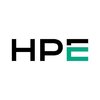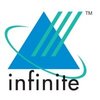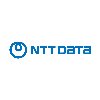Senior System Administrator
60+ Senior System Administrator Interview Questions and Answers

Asked in VVDN Technologies

Q. How to stop IIS Service? What is CDN? What are the reason 502 bad gateway error? What is FSMO and How many type of roles? What is Group Policy and how many object? When do we use WDN? What are the different b/w...
read moreAnswers to questions related to Senior System Administrator role
To stop IIS service, open Services console and stop the World Wide Web Publishing Service
CDN stands for Content Delivery Network, it is a distributed network of servers that deliver web content to users based on their geographic location
502 bad gateway error occurs when a server acting as a gateway or proxy receives an invalid response from an upstream server
FSMO stands for Flexible Single Master Operations, ther...read more

Asked in Wipro

Q. How do you stage a server in a VM and physical environment?
Staging a server in VM and physical environment
Create a VM with the same specifications as the physical server
Install the same operating system and software on both the VM and physical server
Configure the VM to mimic the network settings of the physical server
Test the applications and services on the VM before deploying to the physical server
Ensure that the VM and physical server have the same hardware and software configurations
Use tools like VMware vSphere or Microsoft Hype...read more
Senior System Administrator Interview Questions and Answers for Freshers

Asked in Hewlett Packard Enterprise

Q. ANSIBLE OR SHELL SCRIPT. WHICH ONE IS BEST WHEN YOU DO A TASK ON MULTIPLE SERVERS? TELL ME WHY IT IS BEST?
Ansible is best for tasks on multiple servers due to its automation and scalability.
Ansible allows for automation of tasks across multiple servers, reducing manual effort and potential errors.
Ansible is scalable, allowing for easy management of large server environments.
Shell scripts can be useful for simple tasks on a few servers, but become cumbersome and error-prone on larger scales.
Ansible also provides better logging and reporting capabilities compared to shell scripts.
E...read more

Asked in TIBCO Software

Q. What about Back servers and which application you using?
We use backup servers to ensure data redundancy and minimize downtime. We use various applications depending on the specific needs of the system.
We use backup servers to store copies of data in case of system failure or data loss.
The specific application used depends on the needs of the system, such as Veeam, Acronis, or Backup Exec.
We ensure that backups are performed regularly and that the data is stored securely.
We also test the backups periodically to ensure that they can...read more

Asked in Musikaar

Q. How do you set up passwordless authentication between two or more Linux servers?
Set up passwordless authentication between Linux servers using SSH keys
Generate SSH key pair on the source server using ssh-keygen command
Copy the public key to the destination server's authorized_keys file
Ensure correct permissions on .ssh directory and authorized_keys file (700 and 600 respectively)
Test the passwordless authentication by SSHing from source to destination server

Asked in Musikaar

Q. What is NPS service and how do you integrate it with network authentication using a network device?
The NPS service is a network policy server used for network authentication. It can be integrated with network devices using RADIUS protocol.
Set up NPS server with network policies for authentication
Configure network devices to use RADIUS server for authentication
Ensure proper communication between NPS server and network devices
Test authentication process to ensure it is working correctly
Senior System Administrator Jobs




Asked in Hewlett Packard Enterprise

Q. What if we encounter an issue with a module during patching? Would you continue patching or resolve the issue before proceeding?
I would resolve the issue before continuing with patching.
Stopping the patching process and resolving the issue would prevent any further complications or errors.
Continuing with patching could potentially cause more issues or make the existing issue worse.
Once the issue is resolved, I would then resume the patching process.
It's important to prioritize resolving the issue before continuing with any other tasks.

Asked in Wipro

Q. How do you install the latest security tools on the server?
Security tools can be installed using package managers or manually downloading and installing them.
Use package managers like apt-get, yum, or pacman to install security tools
Manually download and install security tools from their official websites
Regularly update the security tools to ensure the latest security patches are applied
Share interview questions and help millions of jobseekers 🌟


Asked in Wipro

Q. How do you deploy and configure monitoring tools on a server?
To deploy and configure monitoring tool in the server, follow these steps:
Choose a monitoring tool that suits your needs and requirements
Install the monitoring tool on the server
Configure the monitoring tool to monitor the desired metrics and parameters
Set up alerts and notifications for critical events
Regularly review and analyze the monitoring data to identify issues and optimize performance

Asked in IT By Design

Q. What is server role and how to install
A server role is a specific function or purpose that a server performs in a network environment.
Server roles define the tasks and responsibilities of a server.
They determine the services and features that the server provides.
Server roles can include roles like file server, web server, database server, domain controller, etc.
To install a server role, you can use the server manager or PowerShell command-line interface.
For example, to install the web server role in Windows Serve...read more

Asked in Musikaar

Q. What is the difference between a clone and a template in VMware?
A clone is an exact copy of a virtual machine while a template is a pre-configured virtual machine that can be used to create clones.
Clones are independent copies of a virtual machine, while templates are pre-configured virtual machines used for creating clones
Clones retain the same configuration and settings as the original virtual machine, while templates are used as a baseline for creating new virtual machines
Clones are fully functional virtual machines that can be powered...read more

Asked in TIBCO Software

Q. How do you troubleshoot an infected PC and drive using an antivirus application?
Antivirus application is essential for protecting systems from malware. Troubleshooting infected PCs and drives involves several steps.
Ensure antivirus software is up-to-date and perform a full system scan
Isolate infected PC or drive from the network to prevent further spread of malware
Identify and remove any malicious files or programs detected by the antivirus software
Restore any damaged or deleted files from backups
Educate users on safe browsing habits and avoiding suspici...read more

Asked in Wipro

Q. How do you troubleshoot a Windows Server reboot issue?
To troubleshoot Windows Server reboot issue, check event logs, hardware, drivers, and updates.
Check event logs for any error messages or warnings related to the reboot
Check hardware components such as RAM, CPU, and power supply
Check drivers for any outdated or corrupted drivers
Check for any pending updates or patches
Use diagnostic tools such as Windows Memory Diagnostic or System File Checker
Check for any malware or virus infections
Review any recent changes made to the system...read more

Asked in Oakland Systems

Q. What is the process for backing up a MySQL database and how can a shell script be created to automate this at a specific time?
Automating MySQL database backups using shell scripts ensures data safety and recovery efficiency.
Use the `mysqldump` command to create a backup: `mysqldump -u username -p database_name > backup.sql`.
Schedule the backup using `cron` by editing the crontab with `crontab -e`.
Add a line like `0 2 * * * /path/to/backup_script.sh` to run the script daily at 2 AM.
Ensure the backup script has executable permissions: `chmod +x /path/to/backup_script.sh`.
Consider compressing the backu...read more

Asked in FIS

Q. How do you identify vulnerabilities on a system or network device?
Identifying vulnerabilities involves scanning for weaknesses and analyzing potential threats.
Perform regular vulnerability scans using tools like Nessus or OpenVAS
Analyze system logs and network traffic for suspicious activity
Stay up-to-date on security patches and advisories
Conduct penetration testing to simulate attacks and identify weaknesses
Utilize threat intelligence sources to stay informed of emerging threats
Implement security best practices such as strong passwords an...read more

Asked in TIBCO Software

Q. How do you install images (Windows 7, Windows 10) using a pen-drive and network (SCCM) boot?
Installing Windows 7 and 10 via USB and SCCM involves creating bootable media and configuring network deployment.
Create a bootable USB drive using tools like Rufus or Windows Media Creation Tool.
For USB installation, format the drive to FAT32 and use the Windows ISO to copy files.
SCCM (System Center Configuration Manager) allows network-based installations by deploying images over the network.
In SCCM, create a task sequence for OS deployment and configure the distribution poi...read more

Asked in Finicity

Q. What incident did you handle that is classified as P1?
I handled a critical server outage incident affecting production services.
Identified root cause of server outage as hardware failure
Coordinated with vendors for replacement parts and emergency maintenance
Implemented failover procedures to minimize impact on production services

Asked in Finicity

Q. What is the process for configuring and managing Citrix Netscaler?
Configuring and managing Citrix Netscaler involves setting up virtual servers, load balancing, SSL offloading, and monitoring.
Configure virtual servers to route traffic to backend servers
Set up load balancing for distributing traffic efficiently
Implement SSL offloading to offload SSL processing from backend servers
Monitor performance and troubleshoot issues as needed

Asked in TIBCO Software

Q. Which ticketing tools have you used for managing tickets?
We use JIRA and ServiceNow for ticketing.
JIRA is used for internal IT tickets and project management.
ServiceNow is used for external customer tickets and incident management.
Both tools are highly customizable and integrate well with other systems.
We also have experience with Zendesk and Freshdesk for smaller teams or projects.

Asked in quatrro business support services

Q. What's MX record? What is the use of MX record Can we receive email if we have not added MX record
MX record is a DNS record that specifies the mail server responsible for accepting email messages on behalf of a domain.
MX record stands for Mail Exchange record
It is used to route emails to the correct mail server
MX record contains a priority value to determine the order of mail servers to try
Example: MX record for domain example.com could be '10 mail.example.com' and '20 backup.example.com'
Without an MX record, email delivery may fail or be delayed

Asked in IT By Design

Q. How do you create and configure an Outlook profile?
To create and configure an Outlook profile, open Outlook, go to File > Account Settings > Add Account, enter email address and password, and follow prompts.
Open Outlook application on your computer
Go to File menu and select Account Settings
Click on Add Account
Enter your email address and password
Follow the prompts to complete the setup

Asked in FNF India

Q. What are the safety and security measures implemented in the workplace?
Workplace safety and security measures ensure a secure environment for employees and protect company assets.
Regular safety training sessions for employees to handle emergencies, such as fire drills.
Implementation of access control systems, like key cards, to restrict entry to sensitive areas.
Installation of surveillance cameras to monitor premises and deter unauthorized access.
Routine maintenance of fire alarms and extinguishers to ensure they are functional.
Cybersecurity pro...read more

Asked in Wipro

Q. What is your understanding of an AD object?
AD object refers to any entity that can be stored in Active Directory.
AD objects can be users, groups, computers, printers, etc.
Each object has a unique identifier called a Security Identifier (SID).
Objects can have attributes such as name, description, email address, etc.
Objects can be organized into containers such as Organizational Units (OU).

Asked in Finicity

Q. What Citrix implementations have you handled?
I have handled multiple Citrix implementations in various organizations.
Implemented Citrix XenApp and XenDesktop for virtual desktop infrastructure (VDI)
Managed Citrix NetScaler for load balancing and secure remote access
Configured Citrix Provisioning Services for image management
Troubleshooted Citrix Receiver and StoreFront for application delivery
Upgraded Citrix environments to newer versions for improved performance

Asked in e-Labs InfoTech Private Limited

Q. What technologies have you worked with?
I have worked on a variety of technologies including Windows Server, Linux, VMware, Active Directory, and networking equipment.
Windows Server
Linux
VMware
Active Directory
Networking equipment

Asked in U&D Square Solutions

Q. What is your expertise in VMware?
I have extensive expertise in VMware virtualization technology.
Experience in deploying and managing VMware vSphere environments
Proficient in troubleshooting and resolving issues related to VMware infrastructure
Skilled in optimizing performance and capacity planning for VMware virtual machines
Knowledge of VMware NSX for network virtualization
Certifications such as VMware Certified Professional (VCP) demonstrate expertise

Asked in Finicity

Q. What are the components of Citrix and their uses?
Citrix components include XenApp, XenDesktop, NetScaler, and ShareFile for virtualization, networking, and file sharing.
XenApp: Application virtualization platform for delivering Windows applications to users.
XenDesktop: Desktop virtualization platform for delivering virtual desktops to users.
NetScaler: Networking platform for load balancing, security, and optimization of applications.
ShareFile: File sharing and synchronization platform for securely accessing and sharing file...read more
Asked in Cyberspace Networking Systems

Q. How will you resolve email delivery issues?
I will troubleshoot email delivery issues by checking server settings, spam filters, DNS records, and email logs.
Check server settings to ensure proper configuration
Review spam filters to see if emails are being blocked
Verify DNS records for correct MX entries
Examine email logs for any errors or delivery failures
Asked in Cyberspace Networking Systems

Q. How would you strengthen your network security?
To strengthen network security, I would implement strong encryption, regularly update software, conduct regular security audits, and educate users on best practices.
Implement strong encryption protocols such as SSL/TLS to protect data in transit
Regularly update software and firmware to patch vulnerabilities
Conduct regular security audits and penetration testing to identify and address weaknesses
Educate users on best practices such as creating strong passwords and avoiding phi...read more
Asked in Cyberspace Networking Systems

Q. How would you troubleshoot network issues?
I would start by checking physical connections, then move on to checking network settings and configurations, and finally use network monitoring tools to identify any issues.
Check physical connections such as cables and ports
Verify network settings and configurations on devices
Use network monitoring tools like Wireshark to analyze traffic
Check for any network congestion or bandwidth issues
Test connectivity between devices using tools like ping or traceroute
Interview Questions of Similar Designations
Interview Experiences of Popular Companies





Top Interview Questions for Senior System Administrator Related Skills



Reviews
Interviews
Salaries
Users
















